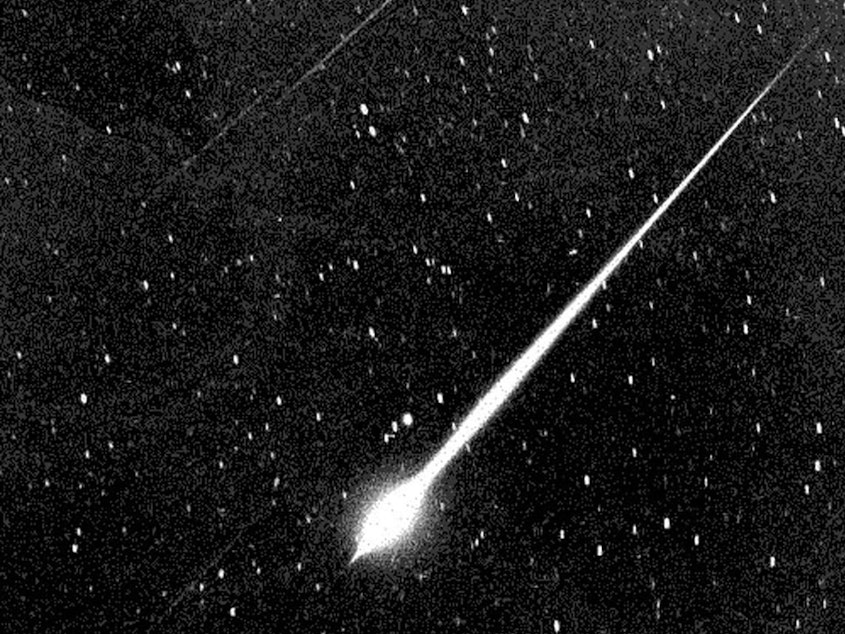Watch The Leonid Meteor Shower This Weekend

While some might say the weekend before Thanksgiving is too early for holiday wish making, every year around that time the Leonid meteor shower brings plenty of opportunities to do so.
This year the shower of shooting stars is expected to peak late Saturday night and into Sunday morning.
Always occurring in mid-November, according to NASA an average of about 15 meteors per hour streak across the night sky during the shower's yearly peak.
The cascade will be competing with a waxing gibbous moon so the best time to watch is after the moon has set but before dawn.
NASA suggests finding a viewing site far away from city or street lights and giving your eyes time to adjust to the darkness.
Sponsored
"In less than 30 minutes in the dark, your eyes will adapt and you will begin to see meteors," the space agency writes.
Also, observers should be patient and prepared to get cozy, bringing a sleeping bag, blanket or lawn chair. They should also check the weather — clouds can ruin the view and being cold can ruin the experience.
In the night sky, it will appear like the meteors are coming from the constellation Leo, which gives the shower its name. However, this is neither their origin nor the best part of the sky to look for them.
"It is actually better to view the Leonids away from the radiant: They will appear longer and more spectacular from this perspective," NASA notes.
The meteors themselves come from the comet 55P/Tempel-Tuttle, which completes an orbit around the sun every 33 years. When the comet passes the sun, a debris trail is created. The Earth then passes through the cloud of space dust every November.
Sponsored
This process means that every 33 years or so viewers on Earth may experience a Leonid storm, which is much greater in intensity than a Leonid shower and can produce hundreds to thousands of meteors per hour.
"These outbursts of meteor activity are best seen when the parent object, comet 55P/Tempel-Tuttle, is near perihelion (closest approach to the sun). Yet it is not the fresh material we see from the comet, but rather debris from earlier returns that also happen to be most dense at the same time," writes the American Meteor Society.
One such outburst occurred in 1966, with thousands of meteors blazing across the sky during the course of 15 minutes.
NASA hosts a web page that compiles eye witness accounts from that 1966 storm and one of those eyewitnesses, Mike Jones, who was a cadet at Fort Wolters near Mineral Wells, Texas, at the time, says he observed dozens of meteors falling from the night sky every second.
"The 1966 Leonid storm will always remain a natural wonder I'll never forget, the night the sky rained fire!" Jones wrote.
[Copyright 2018 NPR]



